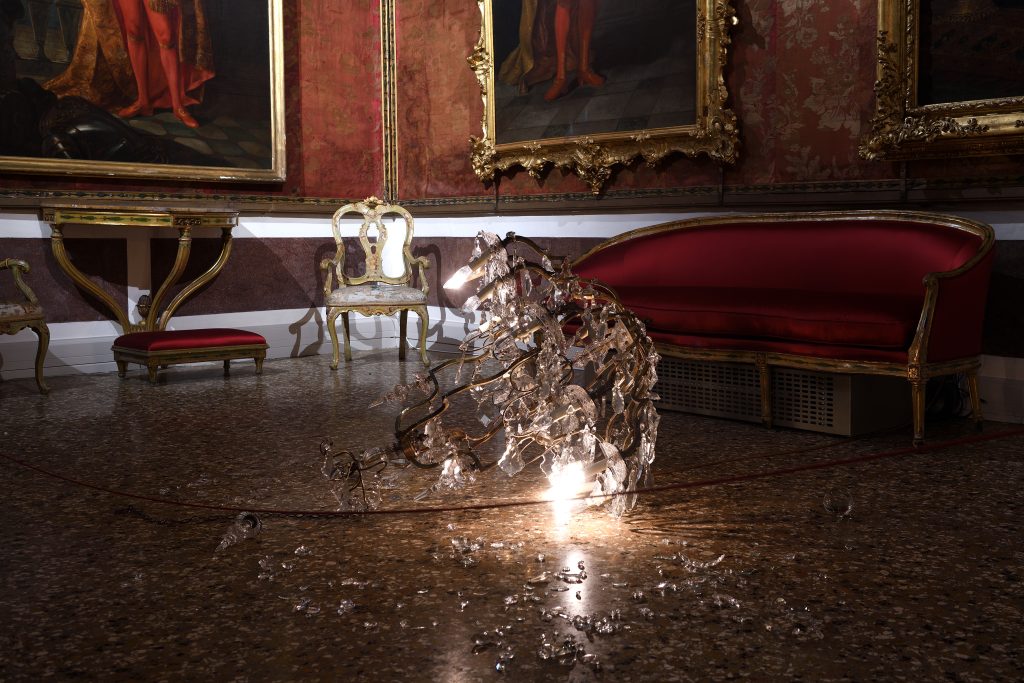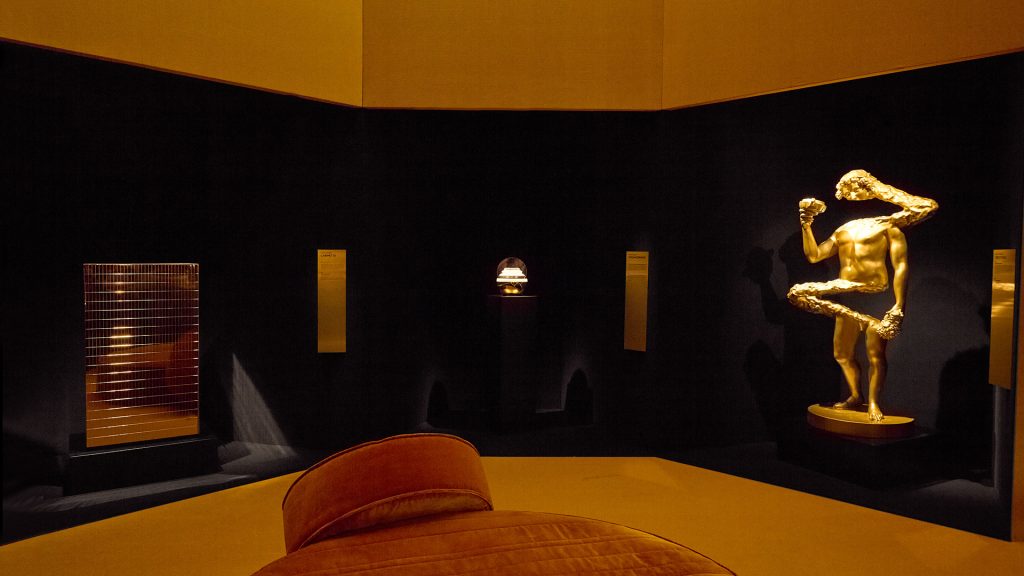Link About It: This Week’s Picks
From gender neutral dolls, to racist AI, and giant inexplicable planets in our galaxy, our look around the web

Understanding the Bubbles at the Center of the Milky Way
 First spotted in the 1980s, a massive filament-like structure has been seen in the Milky Way some 100 times over the past 30+ years. With the supermassive black hole at its center, its “billowy lobes resemble the two halves of an hourglass” as they stretch out in opposite directions. Now, South Africa’s pioneering MeerKAT radio-telescope has revealed that electrons buzzing around inside are producing radio waves. Researchers believe it could be the result of a massive explosion of hot gas from within that forced particles out without piercing the membrane-like boundary. Read more at the Atlantic.
First spotted in the 1980s, a massive filament-like structure has been seen in the Milky Way some 100 times over the past 30+ years. With the supermassive black hole at its center, its “billowy lobes resemble the two halves of an hourglass” as they stretch out in opposite directions. Now, South Africa’s pioneering MeerKAT radio-telescope has revealed that electrons buzzing around inside are producing radio waves. Researchers believe it could be the result of a massive explosion of hot gas from within that forced particles out without piercing the membrane-like boundary. Read more at the Atlantic.
Bjarke Ingels Group’s “The Twist” Gallery Opens in Norway
 Spiraling across the Randselva river in Norway’s Kistefos Sculpture Park, the BIG-designed Twist Museum functions three-fold: as a bridge, a gallery and an inhabitable sculpture. A functional jewel in the wooded expanse, located 43 miles outside of Oslo, the bridge turns the park’s path into a continuous loop. Outside, the straight aluminum panel hull reflects its surroundings. Inside, an “introverted vertical gallery” transitions into an extroverted horizontal one, with the latter offering panoramic views along the river. Read more at Fast Company.
Spiraling across the Randselva river in Norway’s Kistefos Sculpture Park, the BIG-designed Twist Museum functions three-fold: as a bridge, a gallery and an inhabitable sculpture. A functional jewel in the wooded expanse, located 43 miles outside of Oslo, the bridge turns the park’s path into a continuous loop. Outside, the straight aluminum panel hull reflects its surroundings. Inside, an “introverted vertical gallery” transitions into an extroverted horizontal one, with the latter offering panoramic views along the river. Read more at Fast Company.
Chicago Architecture Biennial Addresses Surveillance, Segregation and More
 The third edition of North America’s largest contemporary art, design and architecture survey, this year’s Chicago Architecture Biennial focuses on the theme of “….And Other Such Stories.” In congregating around this topic, the platform—and its curator Yesomi Umolu—has placed the biennial in conversations surrounding social justice, segregation, surveillance, land rights, gun violence and more. Architecture has long impacted political, personal and environmental issues, and the biennial explores this through many powerful lenses. Read more about this iteration (which will run through 5 January 2020) and its depth at CNN.
The third edition of North America’s largest contemporary art, design and architecture survey, this year’s Chicago Architecture Biennial focuses on the theme of “….And Other Such Stories.” In congregating around this topic, the platform—and its curator Yesomi Umolu—has placed the biennial in conversations surrounding social justice, segregation, surveillance, land rights, gun violence and more. Architecture has long impacted political, personal and environmental issues, and the biennial explores this through many powerful lenses. Read more about this iteration (which will run through 5 January 2020) and its depth at CNN.
Lyft Expands App to Include Maps and More Options
 In an effort to rebrand their service as a multimodal transportation hub and to compete with the likes of Google Maps and Apple Maps, Lyft expanded their app to include nearby ride-shares, bikes, scooters, car rentals and public transit options. When a user opens the app they’ll be greeted with a real-time map that will display the aforementioned transport options within their proximity. “At Lyft, we’re working toward a future where cities are centered around people, not cars. The changes we’re making today will unlock better transportation solutions—whether that’s a trip on public transit, a bike ride or a shared Lyft—for people in cities around the country,” Lyft co-founder and president John Zimmer says. Read more at TechCrunch.
In an effort to rebrand their service as a multimodal transportation hub and to compete with the likes of Google Maps and Apple Maps, Lyft expanded their app to include nearby ride-shares, bikes, scooters, car rentals and public transit options. When a user opens the app they’ll be greeted with a real-time map that will display the aforementioned transport options within their proximity. “At Lyft, we’re working toward a future where cities are centered around people, not cars. The changes we’re making today will unlock better transportation solutions—whether that’s a trip on public transit, a bike ride or a shared Lyft—for people in cities around the country,” Lyft co-founder and president John Zimmer says. Read more at TechCrunch.
Researchers Discover Impossible Giant Planet
 Contradicting theories on how planets form, a massive planet (GJ 3512b) found 31 light-years from Earth orbits a tiny red dwarf star (GJ 3512) and according to astronomers “shouldn’t exist.” While the type of star is common, this combination of small star and super-sized plant rarely appears. In fact, many astronomers had queried whether such large planets were able to form around such small stars. “I think the general impression had been that these planets just didn’t exist, but we couldn’t be sure because small stars are very faint, which makes them difficult to study, even though they are much more common than stars like the Sun,” University of Warwick, UK Professor Peter Wheatley tells BBC News. Read more there.
Contradicting theories on how planets form, a massive planet (GJ 3512b) found 31 light-years from Earth orbits a tiny red dwarf star (GJ 3512) and according to astronomers “shouldn’t exist.” While the type of star is common, this combination of small star and super-sized plant rarely appears. In fact, many astronomers had queried whether such large planets were able to form around such small stars. “I think the general impression had been that these planets just didn’t exist, but we couldn’t be sure because small stars are very faint, which makes them difficult to study, even though they are much more common than stars like the Sun,” University of Warwick, UK Professor Peter Wheatley tells BBC News. Read more there.
Mattel’s First-Ever Gender Neutral Doll
 Mattel’s new “Creatable World” Doll kit is a gender-fluid doll that can be feminine-presenting, masculine-presenting, both or neither. The doll represents an important shift and is evidence of how the company is helping to usher in acceptance and understanding. “I think if we could have a hand in creating the idea that a boy can play with a perceived girl toy and a girl can play with a perceived boy toy, we would have contributed to a better, more sensitive place of perception in the world today,” Mattel’s President Richard Dickson tells TIME. “And even more so for the kids that find themselves in that challenging place, if we can make that moment in their life a bit more comfortable, and knowing we created something that makes them feel recognized, that’s a beautiful thing. Read more at TIME.
Mattel’s new “Creatable World” Doll kit is a gender-fluid doll that can be feminine-presenting, masculine-presenting, both or neither. The doll represents an important shift and is evidence of how the company is helping to usher in acceptance and understanding. “I think if we could have a hand in creating the idea that a boy can play with a perceived girl toy and a girl can play with a perceived boy toy, we would have contributed to a better, more sensitive place of perception in the world today,” Mattel’s President Richard Dickson tells TIME. “And even more so for the kids that find themselves in that challenging place, if we can make that moment in their life a bit more comfortable, and knowing we created something that makes them feel recognized, that’s a beautiful thing. Read more at TIME.
ImageNet Roulette’s AI-Assigned Labels
 Designed by artist Trevor Paglen and Microsoft researcher Kate Crawford, ImageNet Roulette—which is on exhibition now at the Fondazione Prada, Milan—applies labels to user-submitted photos by sourcing its identification system from the original ImageNet, a Stanford-backed project that assisted AI in identifying structures, objects and even people. Employees from across the US were rewarded with minimal amounts of money for each photo they assigned a label to and trained the AI to identify all “types” of individuals. From “losers,” “unsuccessful persons,” “wrongdoers,” “dweebs,” “millionaires,” and more, these identifiers feed the AI their biases and beliefs. The art project works to exploit these biases and disconcert those on the wrong end of the algorithm, ultimately resulting in skepticism of current AI systems. “The way we classify images is a product of our worldview,” Paglen tells the New York Times. “Any kind of classification system is always going to reflect the values of the person doing the classifying.” Read more there.
Designed by artist Trevor Paglen and Microsoft researcher Kate Crawford, ImageNet Roulette—which is on exhibition now at the Fondazione Prada, Milan—applies labels to user-submitted photos by sourcing its identification system from the original ImageNet, a Stanford-backed project that assisted AI in identifying structures, objects and even people. Employees from across the US were rewarded with minimal amounts of money for each photo they assigned a label to and trained the AI to identify all “types” of individuals. From “losers,” “unsuccessful persons,” “wrongdoers,” “dweebs,” “millionaires,” and more, these identifiers feed the AI their biases and beliefs. The art project works to exploit these biases and disconcert those on the wrong end of the algorithm, ultimately resulting in skepticism of current AI systems. “The way we classify images is a product of our worldview,” Paglen tells the New York Times. “Any kind of classification system is always going to reflect the values of the person doing the classifying.” Read more there.
ImageNet Database Removes Images Contributing to Racist Bias
 The inspiration for this week’s ImageNet Roulette art installation, ImageNet operates as an online database of thousands of pictures, cataloged using 2,500+ tags. But, as this newfound popularity proved, the cataloging is steeped in systemic racism and bias. One tweet showed that no matter how many times a man uploaded his photo he was assigned “Black,” “Black African” or “Negroid”—when other options like “Doctor,” “Parent” or “Handsome” are also options. White users rarely ran into these issues: they were deemed “Newsreader,” “Microeconomist,” “Society Member,” and more. In response, ImageNet removed over 600K images with tags that contributed to their racist responses. Read more at The Art Newspaper.
The inspiration for this week’s ImageNet Roulette art installation, ImageNet operates as an online database of thousands of pictures, cataloged using 2,500+ tags. But, as this newfound popularity proved, the cataloging is steeped in systemic racism and bias. One tweet showed that no matter how many times a man uploaded his photo he was assigned “Black,” “Black African” or “Negroid”—when other options like “Doctor,” “Parent” or “Handsome” are also options. White users rarely ran into these issues: they were deemed “Newsreader,” “Microeconomist,” “Society Member,” and more. In response, ImageNet removed over 600K images with tags that contributed to their racist responses. Read more at The Art Newspaper.
Link About It is our filtered look at the web, shared daily in Link and on social media, and rounded up every Saturday morning.












